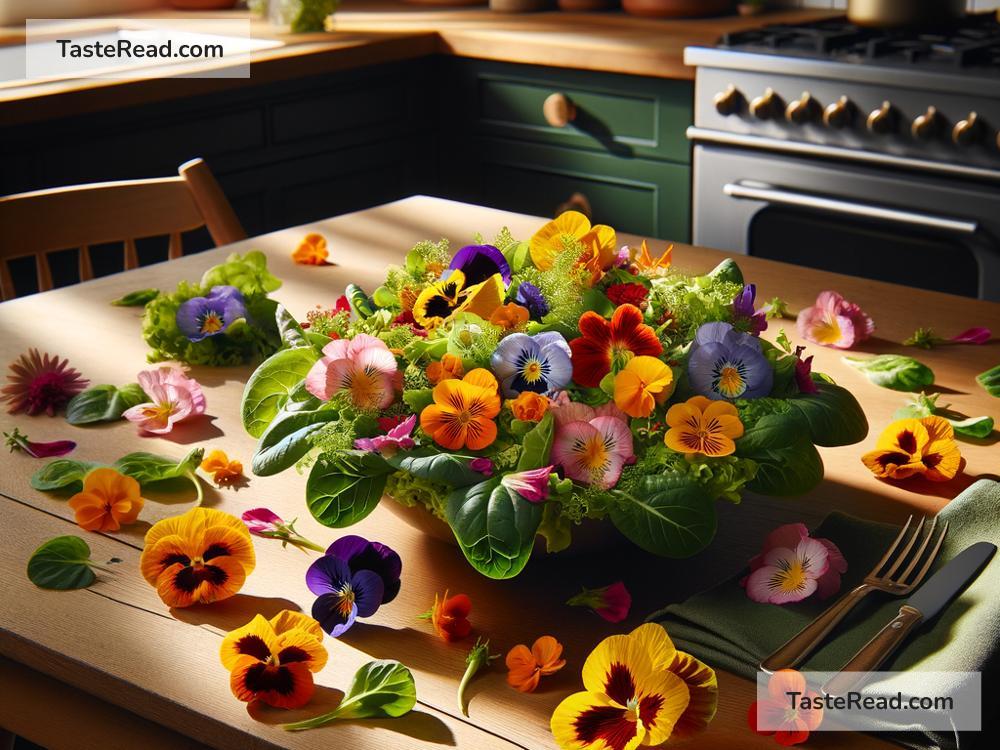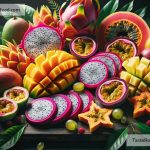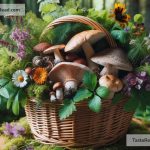Cooking with Flowers: My Experiments with Edible Blooms
Cooking has always been an adventure for me, a way to explore flavors, textures, and aromas. But recently, I decided to embark on a slightly unconventional culinary journey—cooking with flowers. Yes, you read that right, flowers! Not the ones you put in a vase, but the beautiful blooms that can safely make their way onto your plate. My experiments with edible flowers have been nothing short of a revelation, and I’m excited to share this blooming adventure with you.
The Spark of Curiosity
My interest in edible flowers sparked when I stumbled upon an old cookbook at a garage sale. Between its pages filled with traditional recipes, there was a small, enchanting section dedicated to using flowers in cooking. This piqued my interest. The idea of adding colors, flavors, and a touch of whimsy to dishes with flowers was too tempting to ignore. So, I decided to delve into the world of edible blooms.
Choosing the Right Flowers
The first step was figuring out which flowers are edible. It turns out, there’s quite a variety—roses, lavender, pansies, nasturtiums, and marigolds, to name a few. However, a word of caution: not all flowers are safe to eat. It’s crucial to do your research and, if possible, source your edible flowers from specialty food stores or organic gardens where no pesticides are used.
Experiment 1: Lavender Infused Lemonade
My first culinary experiment with flowers was making lavender-infused lemonade. Lavender, with its mesmerizing fragrance and lovely purple hue, seemed like a perfect starting point. I added a small handful of fresh lavender buds to my usual lemonade recipe and let it chill. The result was a refreshing drink with a subtle floral undertone that was an instant hit among my friends and family. This success boosted my confidence, and I was ready to take on more floral experiments.
Experiment 2: Rose Petal Jam
Inspired by my success with lavender lemonade, I decided to make rose petal jam. I used fresh petals from organically grown roses, ensuring they were free from pesticides. The process involved boiling the petals with sugar and water until the mixture thickened. The jam turned out to be a delightful surprise—its flavor was delicate and not overly sweet, with a hint of floral essence that elevated my morning toasts and scones.
Experiment 3: Stuffed Squash Blossoms
Next on my list were squash blossoms, the edible flowers of the zucchini plant. I had seen these vibrant yellow flowers at my local farmers’ market but never knew they were edible. I decided to stuff them with a mixture of cheese, herbs, and spices, then lightly batter and fry them. The result? Absolutely delicious! The blossoms had a subtle, zucchini-like flavor, and the crispy exterior contrasted beautifully with the creamy filling. This dish was a showstopper at my dinner party.
Learnings and Tips
Through my experiments, I learned a few key lessons about cooking with flowers:
- Always Verify: Before using any flower in your cooking, make sure it’s edible. A quick internet search can provide you with a list of safe flowers, but when in doubt, consult a reliable source.
- Start Small: The flavors of some flowers can be overpowering. When trying a new flower, start with a small amount to see how it integrates with your dish.
- Be Creative: Flowers can be more than just a garnish. Think of them as an ingredient that can add a unique twist to both sweet and savory dishes.
- Preserve Their Beauty: Some flowers lose their vibrant colors when cooked. To preserve their visual appeal, consider using them in salads, as garnishes, or in other ways that require minimal or no cooking.
The Journey Continues
My adventure in cooking with flowers has only just begun. With each experiment, I discover not just new flavors and dishes but also a deeper appreciation for the natural beauty that surrounds us. Cooking with flowers has taught me to view ingredients in a new light, to experiment fearlessly, and to bring a touch of nature’s splendor to the dining table.
Whether you’re a seasoned chef or a curious novice, I encourage you to embark on your own floral culinary adventure. The possibilities are as limitless as the varieties of flowers that blanket our planet. Who knows what delightful dishes await in your own experiments with edible blooms?


